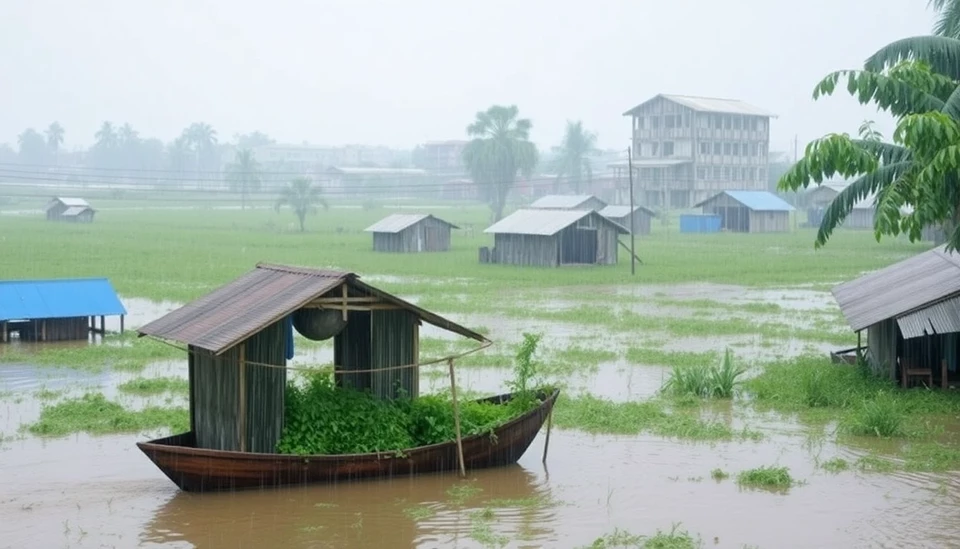
In a striking turn of events, Southeast Asia is grappling with the aftermath of relentless heavy rainfall that has prompted widespread flooding, significant agricultural damage, and forced evacuations across several regions. The rainfall has been particularly intense in countries such as Thailand, Malaysia, and parts of Indonesia, affecting thousands of residents and disrupting local economies.
Reports have emerged detailing how the torrential downpours, which began in late November, have led to overflowing rivers and inundated fields. Farmers in low-lying areas have been hit hardest, with reports indicating that crops such as rice, vegetables, and fruits have been submerged, raising fears of substantial economic loss. Many agricultural workers are struggling to assess the extent of the damage as water levels remain dangerously high, making it difficult for them to access their land.
This weather phenomenon, exacerbated by seasonal monsoon patterns, has resulted in emergency responses from local authorities. Evacuations have been initiated in flood-prone areas, with shelters being set up to accommodate displaced families. Emergency services are working around the clock to ensure the safety of residents and offer assistance to those affected by these unprecedented weather conditions.
In Malaysia, authorities have issued red alerts in several states as the situation rapidly deteriorates. The continuous rain has led to not only agricultural impacts but also significant infrastructural challenges, including road blockages and disrupted transportation networks. Local governments are urging citizens to stay updated on weather reports and heed safety advisories to avoid further casualties.
Experts warn that the situation could worsen in the coming days, as forecasts indicate that heavy rains are expected to continue. Flooding poses serious public health risks, as contaminated water sources can lead to disease outbreaks. Additionally, the agricultural sector faces long-term implications, with potential food shortages looming if the waters do not recede soon.
The impact of these floods extends beyond just immediate physical damage; they also threaten the livelihoods of farmers and the economic stability of the affected regions. Local leaders are calling for increased support and intervention from government agencies and international organizations to help communities recover and restore their agricultural capacities.
As the situation continues to develop, local and regional governments are preparing for the long road ahead in terms of recovery and rebuilding. Support from the international community may be crucial in restoring the affected areas and ensuring that farmers can bounce back from this catastrophic event.
This calamity serves as a stark reminder of the vulnerabilities faced by communities in Southeast Asia concerning extreme weather events. Climate change continues to amplify the frequency and intensity of such disasters, making it imperative for both local and global initiatives to address these challenges head-on.
In summary, the heavy rains and subsequent flooding in Southeast Asia have led to a humanitarian crisis, with evacuations and agricultural devastation reported in multiple countries. The long-term effects on food security and community resilience remain a pressing concern for the regions impacted by these natural disasters.
#SoutheastAsiaFloods #WeatherDisasters #ClimateChange #AgriculturalCrisis #HumanitarianResponse #Evacuations #FloodRelief
Author: Victoria Adams




